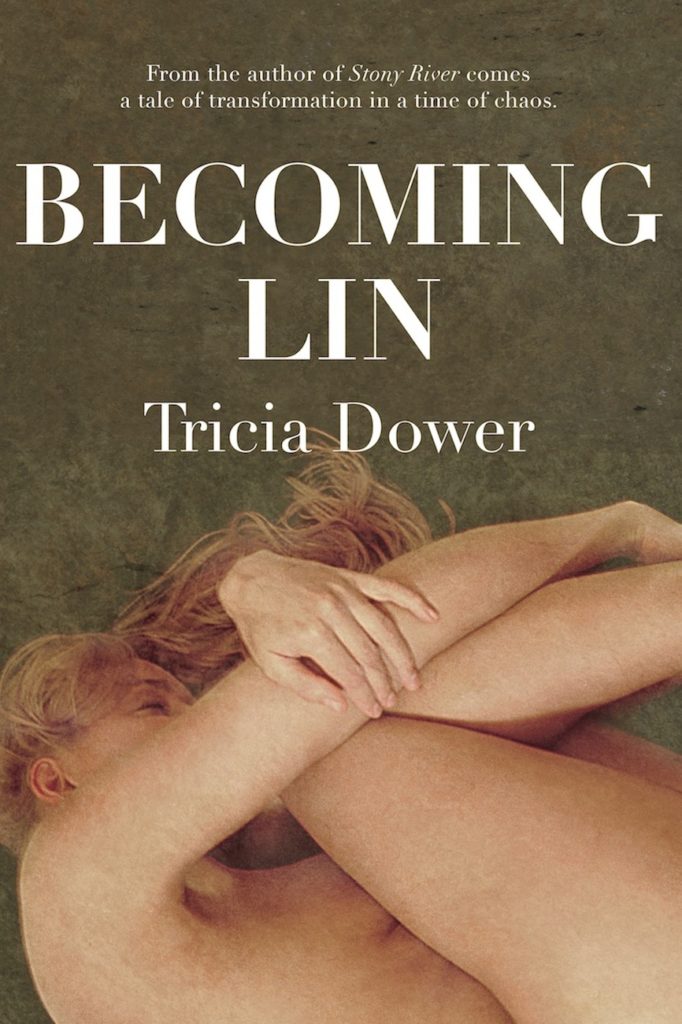by Deborah Rogers –
In a wonderful act of symmetry, our Book Club finished the year as we started: with an author Q&A. In January we welcomed Jennifer Manuel to our meeting. In November we were very grateful to have Tricia Dower join us to answer our questions about her novel, Becoming Lin. Tricia is a Saanich Peninsula resident, but her book is set in the U.S. where she grew up.
Opening in 1965, Becoming Lin follows the story of Linda West as she moves from her sheltered life in Stony River, New Jersey, to begin married life, and the start of a period of self-discovery, in Minnesota. The backdrop to the book is the turbulent time period where the fights for civil rights and women’s rights are at the forefront of many young peoples’ minds.
Our readers loved this book! The characters were so strongly drawn, it was impossible not to get invested in Linda’s journey from the naive young girl we met at the start of the book, to the working single mother she becomes by the end. At our Q&A we learned that the character initially appears in Dower’s first novel Stoney River, and in fact Becoming Lin is the second in a conceived trilogy. The third installment has been written but not published yet.
Questions to the author covered many aspects of the book, from the characters and storyline, to the writer’s approach to creating the story and committing it to the page. Perhaps unsurprisingly many wanted to know how autobiographical the novel is and we were fascinated to hear a breakdown of the ways that Dower’s own life had similarities and complete differences to the character Lin’s. The period details of the novel are quite immersive and we wanted to know how the author had built that world so authentically. Dower told us that as well as having lived in some of the same locations, she returned for visits and spent time really walking those streets and noticing the surroundings. She spent many hours in archives in Minnesota and at St Olaf’s College, reading newspaper articles and reference books. It was important to her that she captured a real feeling of some of the key events such as the civil rights marches that Lin attended.
It’s a book that’s threaded through with feminist ideas, and I think that really appealed to our readers. Watching Lin become a wife, then a mother; and then seeing her start to push against the roles she’s been assigned feels quite powerful. We were interested in the character of Ron – Lin’s husband – and the way that he is portrayed as both protector and saviour, but also the way he tries to support Lin’s need for independence and a sense of equality.
The novel comes to us in moments of time. We flip back and forth between the past and present which means the reader is not allowed to get too comfortable with one version of Lin as we’re witnessing her in her many stages of development. Dower explained how one of her aims in the book was to play a little with the concept of time. Despite moving back and forth on the timeline, it wasn’t a book that was narratively confusing, rather it presented little vignettes, each of which added to the learning from the ones before.
By the end of the book we were left with an impression of a woman on the cusp of becoming the person she wanted to be. She didn’t have it all figured out, but was on the path to finding herself. Learning about the book from its author only added to our enjoyment of it.
We do not have a meeting in December so that brings us to the end of another interesting Book Club year. Here are a few statistics about our reading: during 11 meetings we had three author Q&As; 10 books were read and discussed; there were seven female authors and six Canadian; we read two non-fiction books; we had one meeting not about books (we talked about podcasts!). To find out what we’ll be reading in January sign up to our email list: www.seasidemagazine.ca/book-club.




